Here’s a wake-up call for Amazon Arbitrage sellers: selling on Amazon doesn’t always equal profit. Too often, sellers dive in expecting quick returns, only to find that reality paints a different picture.
A recent analysis of three Amazon Online Arbitrage sellers’ financials revealed some surprising truths. Two sellers were in the red, averaging losses of $16,000 each, while the third? Solid profits between $60,000 and $100,000.
What sets that seller apart? Let’s dive into their approach, share a few real stories, and help you make intelligent moves toward boosting profitability.
Table of Contents
1. December: The Goldmine Month for Amazon Arbitrage Sellers

Let’s talk about one of our clients from last year. December rolled around, and instead of coasting, they buckled down and ramped up, preparing for peak sales. The result? They tripled their profits for the entire year.
But here’s the thing: they didn’t just show up and hope. They spent the fall months — September through November — stocking up, watching market trends, and strategically sourcing products. They saw what everyone was rushing to sell and fill in the gaps. That’s the kind of planning that gets results.
If you want to hit it big, December is your make-or-break month. Don’t just wait until the holiday rush to act. Start early with these steps:
- Stock up on high-demand products and have them ready to go by November. Missing out due to stock shortages can hurt you more than you think.
- Watch holiday trends. Timing is everything; get in on the items that sell fast in December.
- Set your prices to maximize profit. It’s tempting to rush to a discount, but watch your competition and adjust based on demand.

2. Be Smart with Debt – Don’t Let Interest Drain You
Here’s a hard truth: a seller, full of big dreams and plans, found themselves in a debt spiral that wiped out nearly every ounce of profit. They thought taking on debt would be the fast lane to growth — more stock, better reach, higher sales.
On paper, it made sense. But in the real world, numbers play by their own rules.
This Amazon arbitrage seller started with a decent margin. It looked good enough that taking out a loan felt like a smart move. But what they didn’t account for?
The sneaky climb of interest rates over time and how quickly those monthly payments would pile up. It wasn’t long before those payments ate away at their earnings faster than they could make new ones. Their “surefire” strategy to scale turned into a battle to break even.
What to Remember:
- Only borrow what you can pay back. It sounds obvious, but it’s an easy trap. One seller saw profits in theory, but when those monthly payments hit? The margin vanished.
- Always check interest rates. Don’t rush; low-interest options can save you a lot of cash. Look at banks, credit unions, and financing programs that won’t gouge you.
- Compare it to your margin. If the interest rate exceeds 50% of your contribution margin, rethink the loan. Borrow smart, not just because the bank approved you.
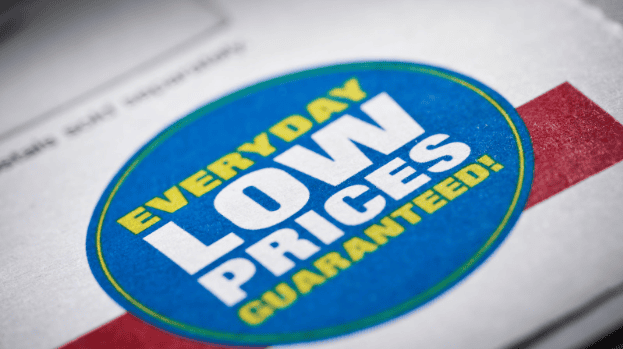
3. Why Low-Priced Items Are Profit Killers
One of our clients — let’s call him Jake — was all-in on the “low price, high volume” strategy. Jake stocked up on these $12 kitchen gadgets, thinking he’d cracked the code. The logic was simple: price low, sell more.
And at first glance, it seemed to be working. The orders came in, and he watched the units fly off the shelves. But excitement turned into confusion when he crunched the numbers at the end of the month.
Here’s what Jake learned the hard way: Amazon’s fees don’t budge just because you’re selling cheaper items. They’re fixed, and they don’t play favorites.
On those $12 sales, Amazon’s cut chewed up nearly 30% of his revenue right off the bat — sometimes even more, depending on storage and processing quirks. Tack on shipping, packaging, and the original cost of goods, and suddenly, Jake’s “sales success” felt like handing over hard-earned money to keep Amazon busy.
Here’s the Bottom Line:
- Stick with products above $15. Anything below that, and you’re essentially just moving stock for Amazon’s benefit.
- Know your fees. Amazon’s cut is 27-34%, no matter what you sell. Add in the cost of goods and prep fees; you have no margin left.
- Avoid the volume trap. Selling cheap stuff to hit volume doesn’t help unless you make massive sales. Keep your eye on per-item profitability, not just units sold.
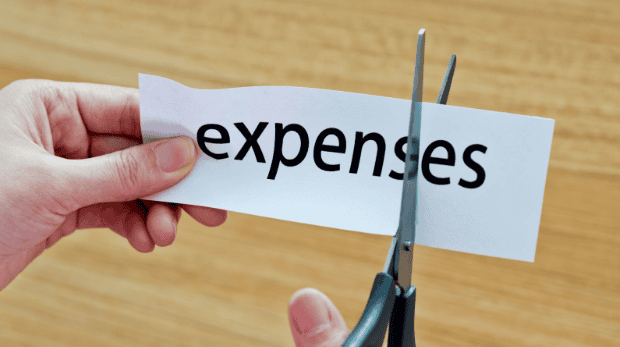
4. Keep Vehicle Expenses Clear-Cut
Two Amazon arbitrage sellers we worked with at Tall Oak Advisors had built solid side hustles on Amazon, using their personal vehicles for sourcing trips, drop-offs, and errands. They confidently listed vehicle expenses as business deductions when tax season rolled around.
But there was a hitch: neither had a clear record showing that those miles were strictly business-related. The lines between personal and business use were so blurred that their books looked more like guessing games than reliable records.
It didn’t take long before their tax preparer flagged the issue. Without proof, those vehicle expenses were like a neon sign inviting questions from the IRS. Suddenly, their clever deductions weren’t just numbers on a page; they were potential audit triggers.
How to Get It Right:
- Log only business miles. Keep a detailed record of any miles used strictly for sourcing or deliveries.
- Skip mixing in personal expenses. Repairs, gas, and maintenance for personal use aren’t business deductions. If you’re deducting mileage, personal costs stay out.
- Use a mileage app. QuickBooks Self-Employed or MileIQ can log mileage for you, taking the guesswork out of tax time.

5. Know Your Contribution Margin (And Why It Matters)
Last year, another seller reached out with a pressing issue — despite decent sales numbers, their profits barely showed up on their bottom line. They were confused and frustrated, unable to pinpoint where their money was going.
After a few deep dives into their numbers, the problem became crystal clear: their cost of goods sold (COGS) was a staggering 60%. Once Amazon’s fees and other operational costs were factored in, they had little room for profit. In short, they were running fast on a treadmill that was taking them nowhere.
The higher the COGS, the slimmer the margin left for everything else. With COGS at 60%, this seller was left with only 40% of their revenue to cover Amazon’s fees, prep costs, shipping, and other overheads.
No wonder they were barely breaking even. To give yourself breathing room, the goal is to keep your COGS below 50%. Anything higher, and profitability turns into an uphill battle.
Here’s How to Calculate Yours:
- Start with your net revenue. That’s total sales minus any refunds or returns.
- Subtract Amazon’s fees. These can run anywhere from 27% to 34%.
- Take out your COGS. Aiming for 50% or less is ideal.
- Add in other expenses. Prep fees, shipping, etc.
Here’s what a healthy margin breakdown might look like:
- Net Revenue: 100%
- Amazon Fees: 27% – 34%
- COGS: 50%
- Prep Costs: 2%
- Other Costs: 6% – 10%
After covering these expenses, if your remaining margin is below 5%, you’re left with almost nothing to reinvest or grow. Monitoring these numbers closely is essential — they will either support your profit or erode it.
Conclusion: Profitability Takes a Plan, Not Just Hope
Let’s be real: running a profitable Amazon OA business isn’t just about hoping for the best or riding the next trend. It’s about knowing your numbers inside and out, planning smartly, and making every decision count.
The lessons here show that even minor tweaks can make a big difference over time. Don’t let these insights just sit on the page — put them into action. Your bottom line will thank you for it.
Take Control of Your Finances Today!
Whether you’re a Reseller (Wholesale, Retail Arbitrage, Online Arbitrage, Dropshipping) or a Brand Owner, managing finances is key to your success. We support eCommerce businesses across major platforms like Amazon, Shopify, eBay, Walmart, Etsy, BigCommerce, and beyond.
See if you qualify for a free strategy session with our team to learn how Tall Oak Advisors can streamline your bookkeeping and ensure accurate tax preparation for your business.
Need a quick quote?
Or explore our range of free resources crafted specifically for eCommerce sellers:
- Business Tax Worksheet
- Frequently Asked Questions About Taxes and Bookkeeping
- Tax Write-Offs Every Amazon and Shopify Seller Should Know
Take the first step toward a stronger financial future and position your business for long-term success.
17 Comments
Leave A Comment
Here’s a wake-up call for Amazon Arbitrage sellers: selling on Amazon doesn’t always equal profit. Too often, sellers dive in expecting quick returns, only to find that reality paints a different picture.
A recent analysis of three Amazon Online Arbitrage sellers’ financials revealed some surprising truths. Two sellers were in the red, averaging losses of $16,000 each, while the third? Solid profits between $60,000 and $100,000.
What sets that seller apart? Let’s dive into their approach, share a few real stories, and help you make intelligent moves toward boosting profitability.
Table of Contents
1. December: The Goldmine Month for Amazon Arbitrage Sellers

Let’s talk about one of our clients from last year. December rolled around, and instead of coasting, they buckled down and ramped up, preparing for peak sales. The result? They tripled their profits for the entire year.
But here’s the thing: they didn’t just show up and hope. They spent the fall months — September through November — stocking up, watching market trends, and strategically sourcing products. They saw what everyone was rushing to sell and fill in the gaps. That’s the kind of planning that gets results.
If you want to hit it big, December is your make-or-break month. Don’t just wait until the holiday rush to act. Start early with these steps:
- Stock up on high-demand products and have them ready to go by November. Missing out due to stock shortages can hurt you more than you think.
- Watch holiday trends. Timing is everything; get in on the items that sell fast in December.
- Set your prices to maximize profit. It’s tempting to rush to a discount, but watch your competition and adjust based on demand.

2. Be Smart with Debt – Don’t Let Interest Drain You
Here’s a hard truth: a seller, full of big dreams and plans, found themselves in a debt spiral that wiped out nearly every ounce of profit. They thought taking on debt would be the fast lane to growth — more stock, better reach, higher sales.
On paper, it made sense. But in the real world, numbers play by their own rules.
This Amazon arbitrage seller started with a decent margin. It looked good enough that taking out a loan felt like a smart move. But what they didn’t account for?
The sneaky climb of interest rates over time and how quickly those monthly payments would pile up. It wasn’t long before those payments ate away at their earnings faster than they could make new ones. Their “surefire” strategy to scale turned into a battle to break even.
What to Remember:
- Only borrow what you can pay back. It sounds obvious, but it’s an easy trap. One seller saw profits in theory, but when those monthly payments hit? The margin vanished.
- Always check interest rates. Don’t rush; low-interest options can save you a lot of cash. Look at banks, credit unions, and financing programs that won’t gouge you.
- Compare it to your margin. If the interest rate exceeds 50% of your contribution margin, rethink the loan. Borrow smart, not just because the bank approved you.

3. Why Low-Priced Items Are Profit Killers
One of our clients — let’s call him Jake — was all-in on the “low price, high volume” strategy. Jake stocked up on these $12 kitchen gadgets, thinking he’d cracked the code. The logic was simple: price low, sell more.
And at first glance, it seemed to be working. The orders came in, and he watched the units fly off the shelves. But excitement turned into confusion when he crunched the numbers at the end of the month.
Here’s what Jake learned the hard way: Amazon’s fees don’t budge just because you’re selling cheaper items. They’re fixed, and they don’t play favorites.
On those $12 sales, Amazon’s cut chewed up nearly 30% of his revenue right off the bat — sometimes even more, depending on storage and processing quirks. Tack on shipping, packaging, and the original cost of goods, and suddenly, Jake’s “sales success” felt like handing over hard-earned money to keep Amazon busy.
Here’s the Bottom Line:
- Stick with products above $15. Anything below that, and you’re essentially just moving stock for Amazon’s benefit.
- Know your fees. Amazon’s cut is 27-34%, no matter what you sell. Add in the cost of goods and prep fees; you have no margin left.
- Avoid the volume trap. Selling cheap stuff to hit volume doesn’t help unless you make massive sales. Keep your eye on per-item profitability, not just units sold.

4. Keep Vehicle Expenses Clear-Cut
Two Amazon arbitrage sellers we worked with at Tall Oak Advisors had built solid side hustles on Amazon, using their personal vehicles for sourcing trips, drop-offs, and errands. They confidently listed vehicle expenses as business deductions when tax season rolled around.
But there was a hitch: neither had a clear record showing that those miles were strictly business-related. The lines between personal and business use were so blurred that their books looked more like guessing games than reliable records.
It didn’t take long before their tax preparer flagged the issue. Without proof, those vehicle expenses were like a neon sign inviting questions from the IRS. Suddenly, their clever deductions weren’t just numbers on a page; they were potential audit triggers.
How to Get It Right:
- Log only business miles. Keep a detailed record of any miles used strictly for sourcing or deliveries.
- Skip mixing in personal expenses. Repairs, gas, and maintenance for personal use aren’t business deductions. If you’re deducting mileage, personal costs stay out.
- Use a mileage app. QuickBooks Self-Employed or MileIQ can log mileage for you, taking the guesswork out of tax time.

5. Know Your Contribution Margin (And Why It Matters)
Last year, another seller reached out with a pressing issue — despite decent sales numbers, their profits barely showed up on their bottom line. They were confused and frustrated, unable to pinpoint where their money was going.
After a few deep dives into their numbers, the problem became crystal clear: their cost of goods sold (COGS) was a staggering 60%. Once Amazon’s fees and other operational costs were factored in, they had little room for profit. In short, they were running fast on a treadmill that was taking them nowhere.
The higher the COGS, the slimmer the margin left for everything else. With COGS at 60%, this seller was left with only 40% of their revenue to cover Amazon’s fees, prep costs, shipping, and other overheads.
No wonder they were barely breaking even. To give yourself breathing room, the goal is to keep your COGS below 50%. Anything higher, and profitability turns into an uphill battle.
Here’s How to Calculate Yours:
- Start with your net revenue. That’s total sales minus any refunds or returns.
- Subtract Amazon’s fees. These can run anywhere from 27% to 34%.
- Take out your COGS. Aiming for 50% or less is ideal.
- Add in other expenses. Prep fees, shipping, etc.
Here’s what a healthy margin breakdown might look like:
- Net Revenue: 100%
- Amazon Fees: 27% – 34%
- COGS: 50%
- Prep Costs: 2%
- Other Costs: 6% – 10%
After covering these expenses, if your remaining margin is below 5%, you’re left with almost nothing to reinvest or grow. Monitoring these numbers closely is essential — they will either support your profit or erode it.
Conclusion: Profitability Takes a Plan, Not Just Hope
Let’s be real: running a profitable Amazon OA business isn’t just about hoping for the best or riding the next trend. It’s about knowing your numbers inside and out, planning smartly, and making every decision count.
The lessons here show that even minor tweaks can make a big difference over time. Don’t let these insights just sit on the page — put them into action. Your bottom line will thank you for it.
Take Control of Your Finances Today!
Whether you’re a Reseller (Wholesale, Retail Arbitrage, Online Arbitrage, Dropshipping) or a Brand Owner, managing finances is key to your success. We support eCommerce businesses across major platforms like Amazon, Shopify, eBay, Walmart, Etsy, BigCommerce, and beyond.
See if you qualify for a free strategy session with our team to learn how Tall Oak Advisors can streamline your bookkeeping and ensure accurate tax preparation for your business.
Need a quick quote?
Or explore our range of free resources crafted specifically for eCommerce sellers:
- 7 Profit Crushing Mistakes That Will Destroy Your eCommerce Business
- Business Tax Worksheet
- Frequently Asked Questions About Taxes and Bookkeeping
- Tax Write-Offs Every Amazon and Shopify Seller Should Know
Take the first step toward a stronger financial future and position your business for long-term success.
17 Comments
-
Interesting point about contribution margins, Chris. It’s a key metric that many overlook but it essentially determines the viability of a business model. It would be beneficial for sellers to deeply understand this concept to ensure they’re not operating at a loss unknowingly.
-
good read, makes you think twice about what you’re selling and how you’re selling it. always thought low-priced items were an easy win but guess not, huh.
-
true, it’s all about finding that sweet spot, price and product wise.
-
sounds easier said than done if you ask me, not everyone’s got the magic touch.
-


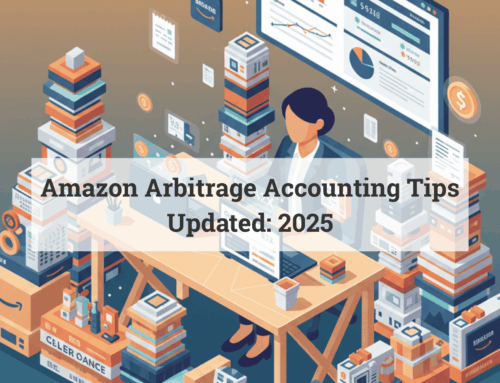
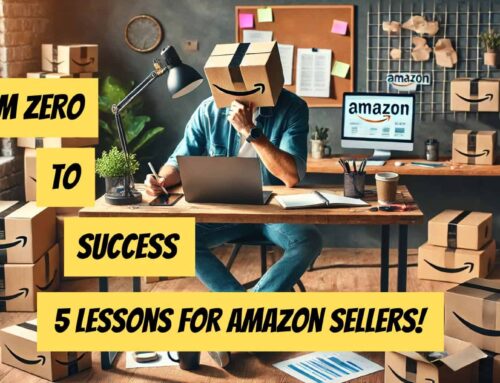

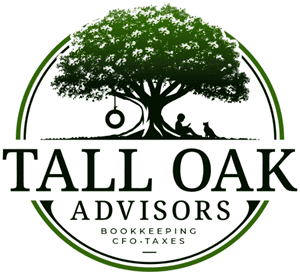
Interesting point about contribution margins, Chris. It’s a key metric that many overlook but it essentially determines the viability of a business model. It would be beneficial for sellers to deeply understand this concept to ensure they’re not operating at a loss unknowingly.
Absolutely. So many sellers have no clue what contribution margin is!
good read, makes you think twice about what you’re selling and how you’re selling it. always thought low-priced items were an easy win but guess not, huh.
true, it’s all about finding that sweet spot, price and product wise.
sounds easier said than done if you ask me, not everyone’s got the magic touch.
Yep, not an easy win at all!